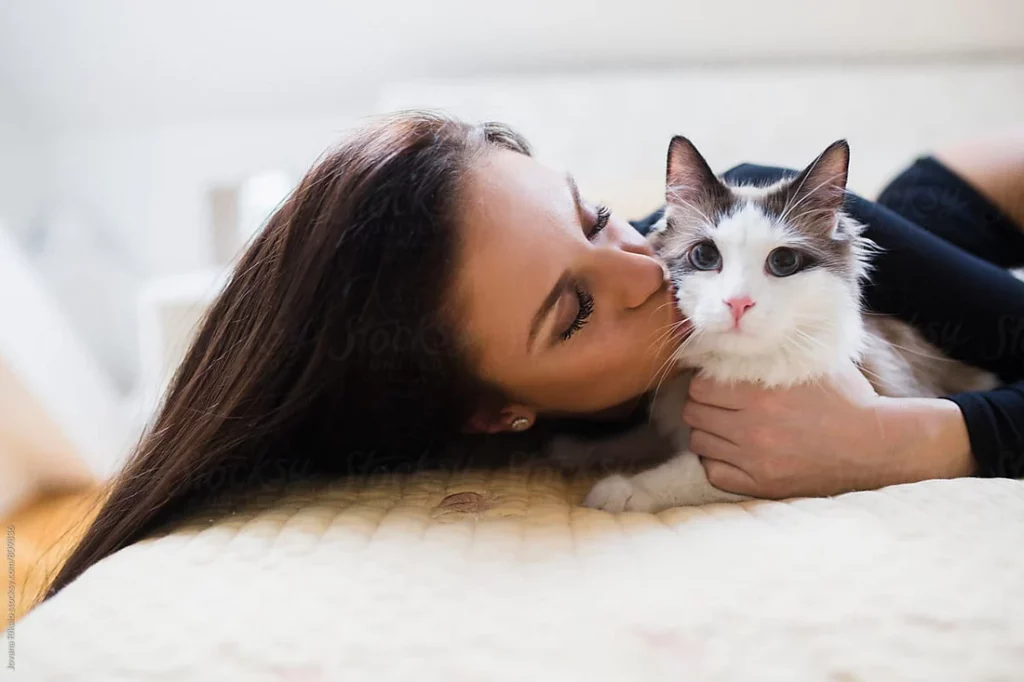One of the most rewarding aspects of having a pet is the connection you build with them over time. Pets bring joy, companionship, and unconditional love into our lives. However, as much as we love them, understanding them on a deeper level requires more than just feeding, playing, and offering affection. Understanding your pet’s behavior and the psychology behind it can significantly improve your relationship, allowing you to communicate better, address their needs more effectively, and provide them with the care they require.
Pets, whether dogs, cats, or other animals, often communicate through behavior rather than words. As a pet owner, learning to interpret these behaviors can help you strengthen the emotional bond you share. In this article, we’ll dive into pet psychology and behavior, share tips for improving communication with your pet, and explore the benefits of understanding your pet’s instincts.
Insight into Pet Psychology and Behavior
Pet psychology involves understanding how pets think, feel, and react to various situations. While animals may not communicate in the same way humans do, they still convey emotions, needs, and desires through their actions. By interpreting these behaviors, you can begin to understand their unique personalities and create a more harmonious environment for them.
1. The Emotional Landscape of Pets
Pets, like humans, experience a range of emotions, including joy, fear, anxiety, excitement, and affection. Understanding their emotional responses can help you address their needs appropriately. For example, a dog that whines or cowers when you leave the house may be experiencing separation anxiety, while a cat that purrs and rubs against you may be expressing affection.
- Dogs: Dogs are highly social animals that form strong bonds with their human families. They often look to their owners for cues on how to behave and feel. Dogs are also highly attuned to the tone of your voice and body language, making them sensitive to your emotional state. If you’re anxious or stressed, your dog may mirror these emotions, which is why maintaining a calm demeanor can be helpful.
- Cats: Cats are more independent than dogs but are equally capable of forming deep bonds with their owners. They express affection through purring, rubbing, and even following you around the house. However, cats can also be more territorial and may require more personal space. Understanding their need for solitude and respecting their boundaries can strengthen the bond.
- Other Pets (Rabbits, Birds, etc.): Even small pets, like rabbits and birds, have specific ways of expressing emotions and desires. Rabbits, for example, may thump their feet when they’re scared, or they might nuzzle you to show affection. Birds like parrots can communicate through vocalizations, and they often form strong emotional attachments to their caregivers.
2. Reading Your Pet’s Body Language
Body language is one of the most important ways pets communicate with us. Whether it’s a wagging tail, raised hackles, or a flicking ear, each movement can reveal a lot about your pet’s emotional state and needs.
- Dogs: A wagging tail generally signals happiness or excitement, but it’s important to consider the wag’s speed and position. A slow wag may indicate uncertainty, while a fast, stiff wag could suggest agitation. A relaxed body and ears may indicate a calm, happy dog, while a stiff posture, along with growling or baring teeth, often signals that a dog feels threatened or aggressive.
- Cats: Cats are more subtle in their body language. A cat’s tail, for example, can be an indicator of mood. A puffed-up tail typically signals fear or aggression, while a flicking or twitching tail may indicate irritation. Cats also communicate through their eyes: slow blinking at you can be a sign of trust and affection, while dilated pupils can signal excitement or anxiety.
- Other Pets: Small pets have their own body language. For instance, rabbits will often thump their hind legs if they’re frightened or alerting you to something unusual. Birds that puff up or “dance” around their cage can indicate curiosity or a desire for attention. Understanding these subtle cues can help you adjust your interactions with your pet.
3. Instinctual Behaviors and Their Origins
Understanding the instincts that drive your pet’s behavior is crucial to strengthening your bond. Instincts are deeply ingrained behaviors that help animals survive and thrive. By understanding why your pet behaves a certain way, you can anticipate their needs and prevent negative behaviors from developing.
- Dogs: Dogs, as descendants of wolves, have strong pack instincts. They crave companionship and structure, which is why they often seek attention or follow you around the house. Training, routine, and positive reinforcement can help satisfy their need for leadership and direction, fostering a sense of security.
- Cats: While domesticated, cats retain strong hunting and territorial instincts. Even indoor cats will engage in stalking, pouncing, and other hunting behaviors, often reflected in play. Understanding this natural instinct allows you to offer enrichment activities that satisfy your cat’s need for physical and mental stimulation, such as interactive toys and climbing structures.
- Other Pets: Small mammals, like rabbits and guinea pigs, have strong burrowing and foraging instincts. Birds often engage in behaviors related to flocking, such as vocalizing to communicate with others. Understanding and accommodating these instincts can help keep your pet happy and prevent unwanted behaviors.
Tips for Improving Communication and Empathy with Your Pet
Now that we have an overview of your pet’s psychological and behavioral traits, let’s look at how to enhance your communication and empathy with them. Improving communication involves observing your pet, responding appropriately to their needs, and being mindful of their emotional state. By showing empathy, you can develop a deeper connection and create a more supportive environment for your pet.
1. Listen to Their Non-Verbal Cues
Pets may not speak our language, but they have their own way of communicating. Being an attentive observer can help you learn to understand their non-verbal cues. Whether it’s through facial expressions, tail movements, vocalizations, or other body language, your pet is always trying to tell you something. For example, a dog may nuzzle or paw at you when they want attention, while a cat may swipe at you when they’re annoyed or overstimulated.
By being patient and mindful of these signals, you can build trust and understanding. It’s important to respond to your pet’s cues with empathy and consistency. For instance, if your cat is swatting or hissing, it may be because they feel overwhelmed or threatened. Instead of reprimanding them, consider giving them space to calm down.
2. Develop a Routine
Pets thrive on routine. Dogs, in particular, benefit from a consistent schedule for feeding, walks, playtime, and rest. A predictable routine helps reduce anxiety and gives pets a sense of security. Cats, while more independent, also benefit from structure, especially when it comes to feeding times and sleep schedules.
By maintaining a routine, you’re showing your pet that they can rely on you, which strengthens the bond between you both. This also helps minimize stress-related behaviors, such as excessive barking or scratching, that arise from uncertainty or anxiety.

3. Positive Reinforcement
Positive reinforcement is an essential tool for communicating with your pet and improving behavior. Rewarding good behavior with treats, praise, or affection helps your pet understand what is expected of them. For example, when training a dog to sit, rewarding them with a treat reinforces the desired behavior. Similarly, if a cat uses the scratching post rather than the furniture, rewarding them with praise or a treat encourages this positive behavior.
Avoid harsh punishments or negative reinforcement, as these can harm your relationship with your pet and lead to fear-based behaviors. Instead, focus on reinforcing positive actions to create a strong, loving bond.
4. Respect Their Personal Space
Every pet has its own comfort zone, and respecting that space is crucial to building a trusting relationship. Some dogs and cats are more social and enjoy being near their owners, while others may need more alone time to recharge. For example, a cat may prefer to retreat to a quiet space when they feel overstimulated, and it’s important to allow them to do so without forcing interaction.
Likewise, some dogs may feel threatened by unfamiliar people or animals, and respecting their need for personal space during these times can help reduce stress and prevent aggressive behavior. By paying attention to your pet’s signals and respecting their boundaries, you create a safe and nurturing environment for them.
Benefits of Better Understanding Your Pet’s Instincts
When you understand your pet’s instincts, you can provide care and support that aligns with their natural behaviors, leading to a happier, healthier relationship. Recognizing and nurturing these instincts can have several benefits:
1. Stronger Emotional Bond
When you understand what drives your pet’s behavior, you can respond more empathetically, leading to a deeper emotional connection. For example, meeting your dog’s need for companionship, or providing your cat with opportunities to engage in hunting-like play, demonstrates that you respect and care for their natural tendencies. This strengthens the trust between you and your pet, making them feel safe, loved, and understood.
2. Improved Behavior and Well-Being
A pet that feels understood and supported is less likely to engage in negative behaviors. Addressing your pet’s needs—whether physical, emotional, or instinctual—can help prevent anxiety, aggression, and destructive behaviors. For instance, dogs with strong herding instincts may benefit from interactive play that channels their energy positively, while cats with territorial instincts may feel more secure in a well-defined space with ample resources.
3. Reduced Stress for Both You and Your Pet
Understanding your pet’s behavior can reduce the stress associated with caregiving. Instead of reacting with frustration or confusion to behaviors like
barking, scratching, or hiding, you’ll have a clearer sense of how to address these actions. A more relaxed and informed approach helps both you and your pet feel more at ease in each other’s company.
Conclusion
Strengthening your bond with your pet is a gradual process that requires patience, understanding, and a willingness to learn. By delving into your pet’s psychology and behavior, improving your communication and empathy, and respecting their instincts, you can create a more harmonious and loving relationship. A pet that feels understood, respected, and cared for will reciprocate that affection in ways that deepen your connection, leading to a fulfilling and lifelong bond.























































